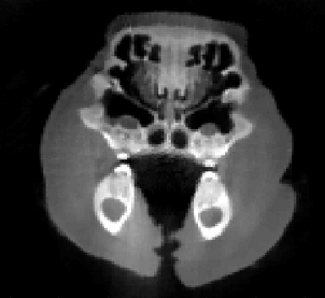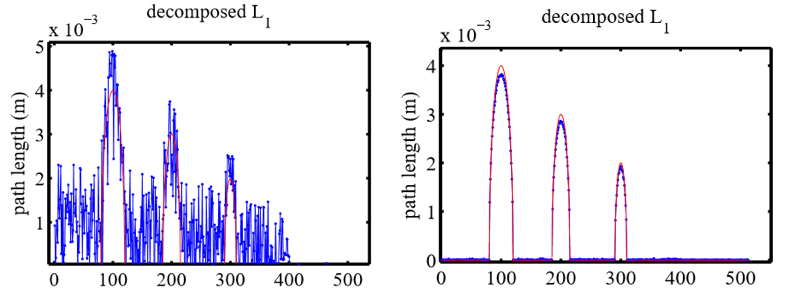Generation of numerical optical and acoustic breast phantoms from MRI data
we develop and implement a methodology for generating anatomically realistic numerical breast phantoms from clinical contrast-enhanced magnetic resonance imaging data. The phantoms will depict vascular structures and the volumetric distribution of different tissue types in the breast. By assigning optical and acoustic parameters to different tissue structures, both optical and acoustic breast phantoms will be established for use in PACT and USCT studies. Details regarding the database of the generated phantoms is here.
The development of advanced iterative reconstruction algorithm for Tetrahedron beam computed tomography (TBCT) (Collaboration with Dr. Tiezhi Zhang)

Recently a novel tetrahedron beam computed tomography (TBCT) imaging system which consists of a linear scan x-ray source and a linear x-ray detector array has been proposed and developed. TBCT is similar to CBCT in image reconstruction geometry; however, its image quality will be significantly superior to that of CBCT due to its scatter rejection mechanism. We are developing advanced iterative reconstruction methods specifically designed for TBCT, which enables the reduction of data acquisition and the improvement of the image quality.
Development of a constrained method for stabilized quantitative projection-based dual-energy material decomposition
Dual-energy imaging has demonstrated the ability to improve the diagnostic potential of x-ray images in many areas of clinical practice. Because image-based material decomposition is relatively easy and fast to implement, dual-energy computed tomography has made many advances during the last decade and is available in several commercialized imaging systems. However, there is still a lack of reliable and valid methods for projection-based material decomposition, which remains a bottleneck for the development of dual-energy computed radiography. One main difficulty existing for projection-based decomposition is the extreme sensitivity to data noise, as the fitting functions are usually high-order polynomials. We demonstrate that a constraint of total projection length can significantly stabilize the decomposition process. This constraint enables a fast convergence to a realistic solution of the least-square sum optimization problem, which proves to be very robust to the data noise. We have obtained results from numerical simulations demonstrating that the new method is able to compute basis material images with considerable accuracy in terms of the quantities of projected thicknesses of basis materials, which may prove use in the future clinical diagnosis.

Optical and Acoustic Diffraction Tomography
Diffraction tomography (DT) is a 3D imaging method that is applicable to a wide range of studies in optics and acoustics. We have developed a variety of novel analytic image reconstruction algorithms for DT that exploit symmetries of the imaging operator to reduce noise levels in the reconstructed images. In collaboration with Dr. Greg Gbur, we have also developed a variety of image reconstruction algorithms for reconstructing the refractive index of a weakly scattering object from intensity measurements. This class of methods has been referred to as intensity diffraction tomography (I-DT). We have developed I-DT reconstruction methods for use with spherical waves, novel scanning geometries, and multi-spectral measurements.